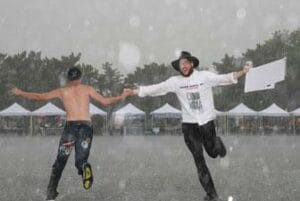For the second time in a decade, 72-year-old Misha Gontcharov started a new life. When he was 70, he won an immigration lottery, said goodbye to his home in Tashkent, Uzbekistan, and began life as a New Yorker. This spring, with the help of Friends of Refugees of Eastern Europe, known as FREE, he renewed his spiritual life by undergoing a bris milah, or ritual circumcision.
Gontcharov may be old enough to be a grandfather to the typical eight-day-old baby who normally cries its way through the traditional Jewish rite, but he’s not alone in undergoing the operation so late in life. In the past few weeks, FREE has helped Shaya, age 61, and Alexander, 63, enter the age-old covenant of the Jewish people. (Neither man wanted their last name released.) Back in 1970, when the organization’s Circumcision Program first started, 90 percent of the participants were young boys. Today the majority of its clients are in the 30 to 60-year-old range.
“Fathers thought it was already too late for them to have a bris, but they wanted their sons to have the right start as Jews,” said Rabbi Mayer Okunov, chairman of the Chabad-Lubavitch-affiliated organization. Years of living in freedom and as part of America’s Jewish communities fortified older adults with more resolve. “Now they are saying it’s better late than never.”
Many men of all ages choose to have a bris out of a desire to “be the same as their sons,” said Okunov, or to celebrate important milestones where other Jewish ceremonies are involved – a son’s bar mitzvah or a daughter’s wedding, for instance. Shaya, for one, approached F.R.E.E. for a bris at the urging of his son David, who had his bris done by the group several months prior.
Strapping and solid from years of physical labor, Gontcharov wanted a bris for as long as he could remember. His mother was afraid to broach the topic with his father, a non-Jewish Communist Party apparatchik. “I always felt I had missed something important in Judaism,” he said. At a Torah class sponsored by FREE in Brooklyn, N.Y., Gontcharov studied the life of Abraham.
“I thought to myself, ‘Abraham had a bris at 99,’ ” said Gontcharov. “I am only 72, surely I can have one too.”
The septuagenarian is the 13,307th bris performed by Okunov’s organization for Jews in need, mostly from the former Soviet Union, in 39 years of providing the service. In other cases, the non-profit has underwritten the ceremonial and anesthesiology costs involved; when necessary, it has even covered salaries of patients during their recovery period.
“Now I feel like a complete Jew,” said Gontcharov. “The bris has given me peace of mind.”
From Bris to Bar Mitzvah
Gontcharov’s bris was performed by Rabbi Israel Heller, who studied under Rabbi A. Romi Cohn, the chief mohel of the group. Frequently, urologists have been known to film Cohn to record his technique for teaching purposes. In two encounters with the Lubavitcher Rebbe, Rabbi Menachem Mendel Schneerson, of righteous memory, Cohn reportedly received the blessing that, “Abraham, our forefather, stands at your right hand.”
Rabbi Yitzchok Kruger performed Shaya’s bris. After his recovery, the mohel joined Shaya and his family and friends to celebrate the completion of such an important mitzvah. Kruger looked at the group and, addressing Shaya, said, “Today, life begins for you anew. Your past is past. You have a chance to start over again.”
Shaya acted on the rabbi’s words immediately. Moments after completing the rite of an eight-day-old boy, Shaya took on the responsibilities of a bar mitzvah and wrapped tefillin for the first time.




